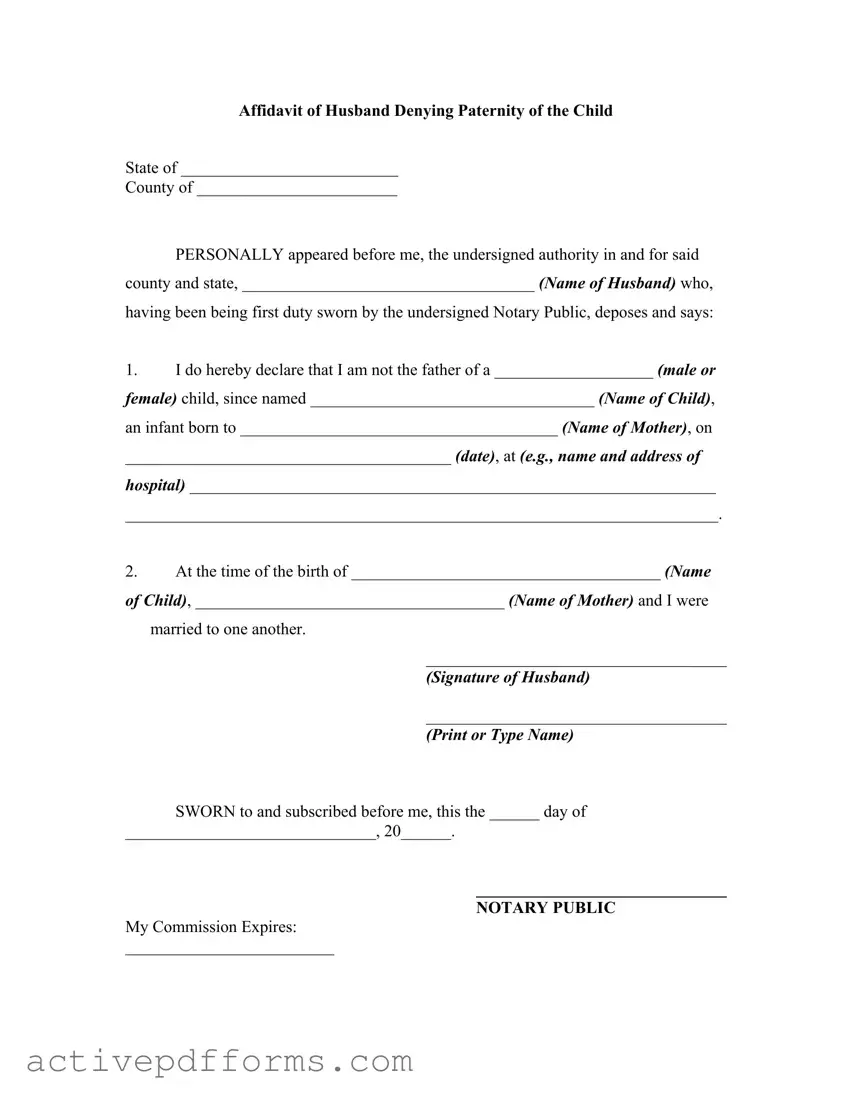Affidavit of Husband Denying Paternity of the Child
State of __________________________
County of ________________________
PERSONALLY appeared before me, the undersigned authority in and for said county and state, ___________________________________ (Name of Husband) who,
having been being first duty sworn by the undersigned Notary Public, deposes and says:
1.I do hereby declare that I am not the father of a ___________________ (male or female) child, since named __________________________________ (Name of Child), an infant born to ______________________________________ (Name of Mother), on
_______________________________________ (date), at (e.g., name and address of hospital) _______________________________________________________________
_______________________________________________________________________.
2.At the time of the birth of _____________________________________ (Name of Child), _____________________________________ (Name of Mother) and I were
married to one another.
____________________________________
(Signature of Husband)
____________________________________
(Print or Type Name)
SWORN to and subscribed before me, this the ______ day of
______________________________, 20______.
______________________________
NOTARY PUBLIC
My Commission Expires:
_________________________
